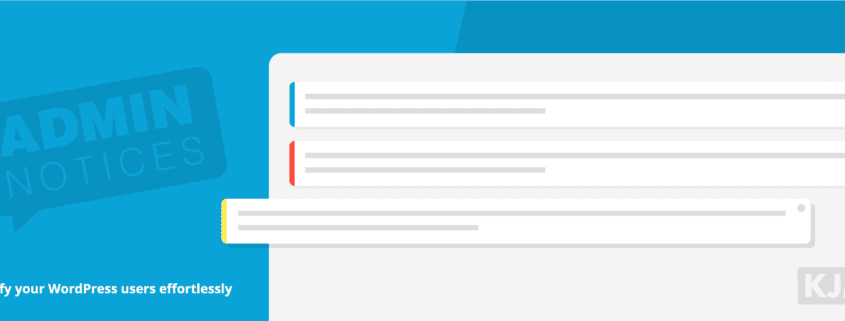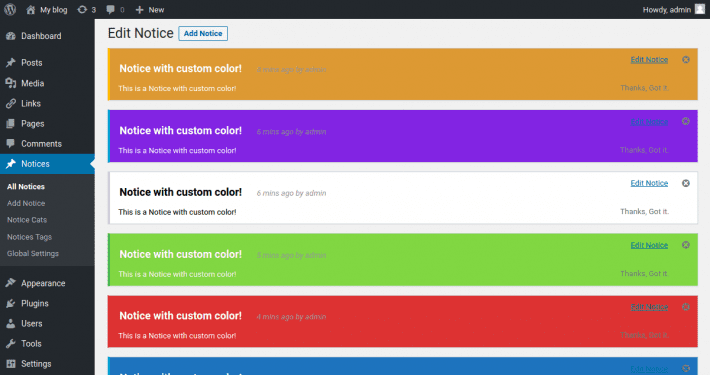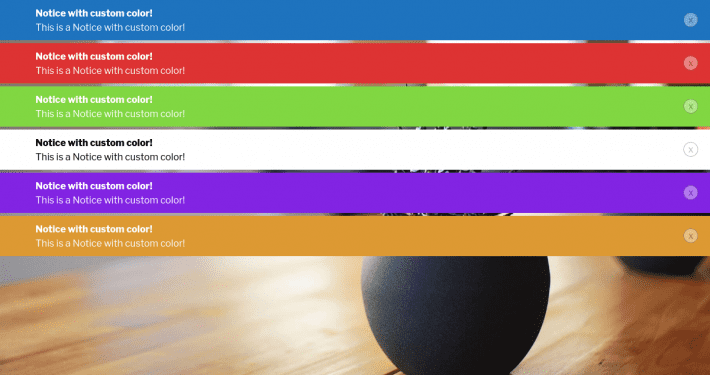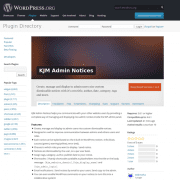Here is an important step in the KJM Admin Notices plugin evolution: the possibility of publishing a notice (notification) on your public site. Whether it’s to announce important news, a promotion, a temporary message to all your visitors, a change in your policies, a new schedule, etc. There are many new possibilities and use cases of this plugin allowing you to display a message at the top of your website.
List of main new features
In addition to the frontend publication, the new version 2.0 released today brings a lot of new features. Let’s take a closer look at each of these new features…
New features and improvements
- Ability to post messages on the public site
- Selection of custom colors for notices
- Track record of views statistics
- New status for archiving a notice
- Alternative update system for beta releases
Languages
Interoperability
Note: in this article, we use without distinction the terms “banner”, “message”, “notice”, “notification” which all refer to the same thing, the notices you can generate using the KJM Admin Notices WordPress plugin which is developed by KAJOOM and offered to the WordPress community as free and open-source software.
Post notices on the public-facing website
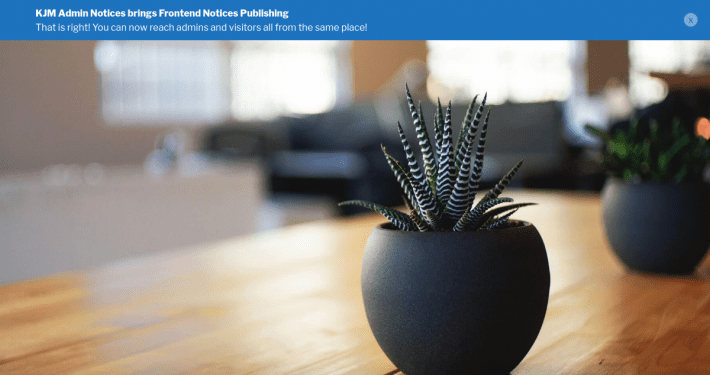
Previously, the KJM Admin Notices plugin, as its name suggests, was used to publish notification messages in the administrative part of WordPress: this is where administrators and editors of a website log in. Convenient to remind other users of an important message, especially when there are a lot of people working on a website simultaneously or not. The new version of the plugin opens a large door to the new possibilities by making it possible not only to display reviews in the back shop (commonly called the “backend”), but also to display these reviews, if necessary, directly on the site accessible to visitors (also known as the “frontend”).
What advantage does this plugin bring to a site manager? The ease of delivering a message on all the pages of your site simply and quickly. The notification will be visible at the top of each page of the site, without having to modify any existing page on your site. Save time and efficiency!
Custom Colors Selection
By default, the notification system comes with 5 categories of notices, each with their respective color. These are the 4 types of notices already integrated into WordPress to which we have added a generic type without colored border:
- info (with a blue border)
- success (with a green border)
- warning (with a yellow border)
- error (with a red border)
- default (with a gray border)
This already offers a certain flexibility of presentation which was sufficient for general backend communication needs. On the other hand, the arrival of the publication in frontend asked for more possibilities, in order to be able to harmonize with all types of sites and their graphic charter. This is why each of the notices can now have its own personalized color and thus blend into your design like a fish in water!
Track Record of Views Statistics
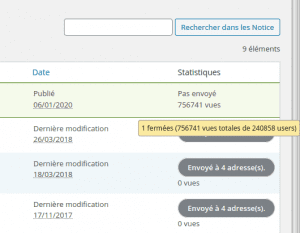
The first thing we want to know after the publication of an important message to all is: has my message been seen? To answer this question, we have integrated a small statistics counter for each banner:
- Total views
- Total number of closings (“dismiss”)
- Total number of separate users
With these figures, we can therefore deduce for example that for a banner which would have been seen 100 times in total by 50 distinct users who would have closed the message 25 times that:
- Users saw on average the message displayed twice on the screen
- One in two people closed the message permanently (which would mean that they read and understood it)
A small interesting option allows you not to distort these statistics unnecessarily by excluding the SuperAdmin and the author of a message from the count of view statistics. We suspect that the author of the message saw his own message probably even several times during the writing process … well, we wish him!
New status for archiving a notice
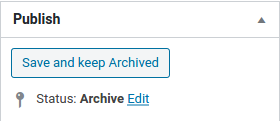
A new publication status has been added to the Notice content type to set the publication status to “Archived”. This is particularly useful for clearly distinguishing published but outdated content from other content in Draft or in the Recycle Bin.
We believe that this type of status is missing from the WordPress framework, which is why we are adding it to this plugin. There is also a plugin that already provides this functionality. This is the Archive Post Status plugin. We have therefore added an element of compatibility with this plugin in order to detect and take charge of the status already provided by this script.
Alternative Update System

The process of developing an application is sometimes a long and iterative process. It often happens that we release an unofficial Beta-release version under development in order to test it more deeply or to make the new functions accessible more quickly to certain users who need it (bug fixes, new suggestions from features). It is in all these cases that the alternative system of updates is very practical to have access to Beta-releases not officially published.
Once the option is activated in the plugin settings, you will see a new link “Check for updates” appear next to the plugin in the Extensions page. You are now in Alternative mode! By clicking on this link, you will check for updates manually. But be aware that this process will be done automatically anyway because the alternative update system is well integrated with that of WordPress.
Support for Right-to-Left Languages (RTL)
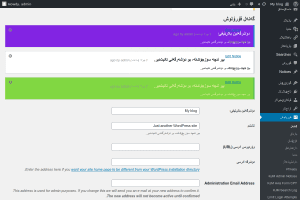
A good proportion of the languages used all over the world are written in the “right to left” direction, unlike most Western languages like French, English or Spanish which are languages written from left to right. In English, the orientation of these languages is called Right-to-left (abbreviated RTL). Among these are Arabic, Hebrew and several others. In an effort to allow as many languages as possible to use the notification system, we have added support for “right to left” languages.
Addition of 3 languages: Arabic and two Indian languages
In the same breath, our work on supported languages aimed to increase the number of websites in the world that can take advantage of the communication features offered by our plugin. With the help of Hiral, our intern developer in virtual residence for 2019, it was fitting to take this opportunity to add a nice Indian touch to the project. Two Indian dialects have therefore been added to the supported languages. As the first language in RTL mode, we left the choice to our developer who chose the challenge of integrating Arabic as a “proof-of-concept”. Other languages will be added over time, including an Inuit language in Canada, Inuktituk, to follow!
Compatibility list with supported plugins

A special effort has been made by our team in order to make our plugin more easily compatible with the other plugins in the KJM suite as well as with other existing external plugins. A list is now displayed in the advanced plugin settings allowing you to quickly view the compatibility status with other known and supported plugins.
Implementation of multiple WordPress hook filters
In the same vein aiming at better interoperability of the plugin, several “hook” filters have been fitted in order to allow customizations and interactions with other developers of themes and plugins. These filters can also be used to modify the behavior of a website in particular via the site’s theme or child theme.
Find out more
To install the plugin in your WordPress site:
Go to Extensions -> Add, then search for “KJM Admin Notices”. Click “Install” then “Activate”.
Visit the official plugin web page:

